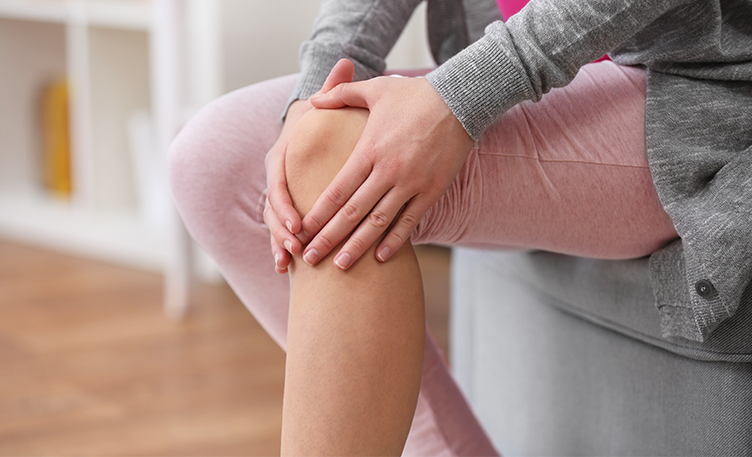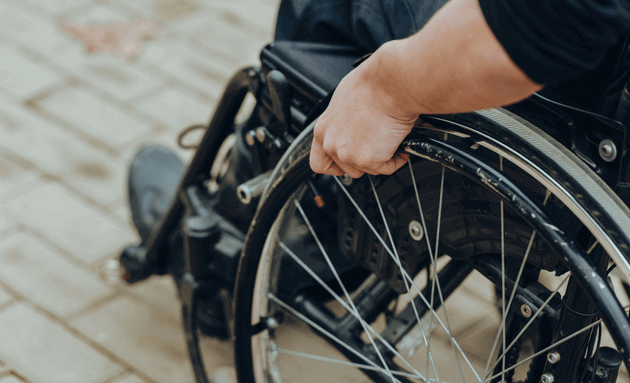What Could Your Joint Pain Mean?

Generally, pain is your brain's way of signalling you to pay more attention to a certain part of your body. Joint Pain, in particular, is caused by damage to the joints resulting from disease or injury. Since joints form the connections between the bones, they provide support and aid movement. An injury can lead to a lot of pain and interfere with natural movement.
Joint pain could affect any part of a joint such as the cartilage, ligament, bone, tendons or muscle, causing inflammation that leads to pain. This inflammation arises due to injury, disease or chronic health conditions, and sometimes even due to allergies. Pain in the joints is a common occurrence in the elderly, although the condition is not restricted to any particular age.
Its effects could range from being mildly irritating to acute or exhausting pain that may require you to visit your doctor for the appropriate diagnosis and medication. Alternatively, your doctor may also recommend weight loss (if you are overweight), vitamin and mineral supplements, and/or physical therapy to help relieve some of the pressure on your joints.
Causes of Joint Pain
Here is an overview of the top 4 causes of joint pain and their symptoms:
Joint Pain Due to Injuries and Sprains

Overexertion during exercises such as running or tennis could strain your kneecap as well as the joints around the shoulders, wrists, elbows, hips, knees, and ankles. This could lead to stiffness or swelling around the joints and can be alleviated within a few weeks by using over-the-counter painkillers, rest, ice packs or compression bandages.
Other obvious injuries, such as a shoulder or knee dislocation, torn ligaments during exercise or a fall could also result in joint pain if left unchecked. Ideally, these should be treated as early as possible to avoid chronic pain issues that could affect your physical mobility.
1. Arthritis
Arthritis is a broad term covering over 100 types of diseases connected to your joints, affecting different areas including the wrists, fingers, knees, hips and sometimes, the tissues and skin. While the causes of this common ailment are not known, factors raising your chances of getting arthritis include your age, gender, genes, obesity, injury, and infection, and work-related triggers such as a sedentary job.
2. Osteoarthritis
Osteoarthritis occurs when the cartilage around the bone is weakened or worn away. This causes the bones to rub against each other and leads to pain in the finger joints, knees or hips. Apart from ageing, osteoarthritis could be caused by a fracture near a joint, or due to an athletic injury or tear to the ligament.
3. Rheumatoid Arthritis
Rheumatoid Arthritis or RA is an autoimmune disease in which your immune system attacks the body’s tissues by mistake causing chronic inflammation. Apart from the symmetric joints such as the knees, wrists, ankles, elbows, hips and shoulders, this condition can affect the blood vessels, the skin, and also organs such as the heart, lungs and the eyes.
While symptoms of RA may not be persistent in terms of severity, the associated inflammation is known to cause damage to the lining of your joints, bone erosion or swelling that can cause deformity, affecting other parts of the body as well. It is thus advisable to see a doctor if you are experiencing unmanageable pain or swelling around the joints so that treatment can be prescribed straightaway.
4. Bursitis
Bursae are small fluid-filled sacs that act as cushions to the tendons, muscles and bones around a joint. These are sometimes inflamed due to repeated actions or positions that apply pressure to these areas. For example, occupational factors such as a person's job as a tile-setter, carpet fitter, or gardener (which require continuous physical exertion), could lead to bursitis if appropriate protective accessories like kneeling pads are not used.
Other activities such as playing a musical instrument or engaging in sports could increase the risk of developing bursitis. Age, and other medical conditions such as rheumatoid arthritis, gout, diabetes, and obesity, are also risk factors.
The severity of these can be reduced by taking frequent breaks during repetitive activity, reducing weight if you're obese, bending your knees when lifting heavy weights or warming up before strenuous or intensive physical activity.
However, you must see a doctor if you notice the following symptoms:
-
-
- Sharp and shooting pain when you exercise or exert yourself.
- Swelling or redness around a joint that is also warm to touch.
- Disabling pain in the joint/s or inability to move the joint without severe discomfort.
- An accompanying fever.
-
Other Chronic Forms of Arthritis
Other long-term or chronic forms of Arthritis include:
- Gout: Symptoms of Gout are redness and swelling. It occurs due to the accumulation of uric acid in the body that is left in joints and usually the big toe. Weight loss, and cutting down on alcohol consumption can help to relieve this pain.
- Spondylosis: Cervical spondylosis affects the joints and bones in the neck area, leading to pain and stiffness. Ankylosing spondylosis is a long-term inflammatory condition that affects the bones and ligaments around and in the spine.
- Fibromyalgia: A chronic widespread inflammatory condition that affects the tendons, muscles, joints as well as the nerves. Symptoms include hypersensitivity to pain, and to the elements of touch and sound; fatigue, and anxiety issues.
Joint Pain Due to Food Allergies, and the Side Effects of Certain Drugs

Food allergies or intolerance to certain foods such as milk and other dairy products, wheat (gluten) or peanuts can cause inflammation in areas around the joints, leading to mild or severe pain or discomfort. The good news, however, is that by proper analysis from your doctor, you can identify allergies and avoid these foods to eliminate the cause of your pain.
While drugs prescribed by the doctor are essential to see us through an illness, these come with some side effects that can cause allergic reactions or joint pains.
Some groups of antibiotics classed under penicillin, for example, as well as fluoroquinolones (ciprofloxacin, levofloxacin, moxifloxacin) have been known to cause unwanted inflammation, swelling and reactions such as joint and muscle pains. Another, less common reaction to drugs is called serum sickness, which comes as a delayed response to the exposure to certain medicines.
In the case of prescribed antibiotics, it is advisable to complete the course of treatment prescribed by your doctor. In addition, it is best to keep him or her informed about the changes in your body especially after taking the medication. The symptoms of inflammation and pain may subside after the drug is altered by your doctor after consultation, or stopped at the due time.
Cancer or a Tumour Around the Joints

It is unlikely that joint and bone pain is linked to cancer as these conditions are usually associated with arthritis. However, if pain or tenderness in the bone or joints persists for over two weeks, and is accompanied by fever or unexplained weight-loss conditions, it is best to consult a doctor as early as possible.






